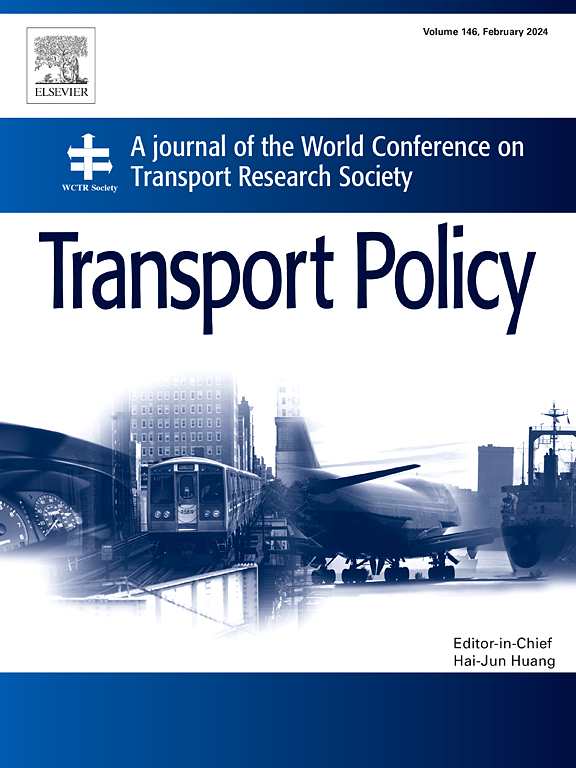Exploring spillover effects in the four shipping markets: Theory and empirical evidence from bulk shipping
IF 6.3
2区 工程技术
Q1 ECONOMICS
引用次数: 0
Abstract
This paper aims at assessing the extent of connectedness (integration) across the four shipping markets (freight, secondhand vessels, newbuilding, and scrap) for three different segments of the industry (bulkers, oil tankers, and LNG vessels). We use monthly data for the period 1990 to 2023. The innovation of our study is that we examine the asymmetric connectedness of the shipping markets following Stopford's (2009)integration theory. We find strong patterns of asymmetric connectedness across the four markets, with the spillover effects being higher at the tails of the conditional distribution. At the macroeconomic level, our dynamic analysis provides evidence that integration is strongly affected by spillover effects arising from the pandemic, the war in Ukraine and the related government interventions to counterbalance the adverse implications for economies globally. From a market level perspective, we corroborate prior literature, finding that the freight market is overall the strongest net spills provider and consequently the dominant one. However, we also find that the secondhand market, especially in the LNG segment, acts partially as a leading market, due to the current geopolitical events that have strengthened the Risky Asset Pricing (RAP) model (shipping paradox). Our findings contribute to the decision-making process in both ship and asset management, revealing a proactive, risk-seeking behavior on the part of shipowners in the secondhand market vis à vis a more conservative behavior in the newbuilding market, which appears to be a lagging indicator of both the freight and secondhand markets.
探索四大航运市场的溢出效应:来自散货航运的理论和实证证据
本文旨在评估该行业三个不同领域(散货船、油轮和液化天然气船)的四个航运市场(货运、二手船、新造船和废料)的连通性(整合)程度。我们使用的是1990年至2023年的月度数据。本研究的创新之处在于,我们根据Stopford(2009)的整合理论考察了航运市场的不对称连通性。我们发现,这四个市场之间存在很强的不对称连通性,在条件分布的尾部,溢出效应更高。在宏观经济层面,我们的动态分析提供的证据表明,一体化受到大流行、乌克兰战争和相关政府干预措施所产生的溢出效应的强烈影响,这些干预措施旨在抵消对全球经济的不利影响。从市场层面的角度来看,我们证实了先前的文献,发现货运市场总体上是最强的净溢油提供者,因此是占主导地位的。然而,我们还发现,二手市场,特别是在液化天然气领域,部分充当了一个领先市场,因为当前的地缘政治事件加强了风险资产定价(RAP)模型(航运悖论)。我们的研究结果有助于船舶和资产管理的决策过程,揭示了二手市场中船东积极主动、寻求风险的行为,而新造船市场中船东的行为更为保守,这似乎是货运和二手市场的滞后指标。
本文章由计算机程序翻译,如有差异,请以英文原文为准。
求助全文
约1分钟内获得全文
求助全文
来源期刊

Transport Policy
Multiple-
CiteScore
12.10
自引率
10.30%
发文量
282
期刊介绍:
Transport Policy is an international journal aimed at bridging the gap between theory and practice in transport. Its subject areas reflect the concerns of policymakers in government, industry, voluntary organisations and the public at large, providing independent, original and rigorous analysis to understand how policy decisions have been taken, monitor their effects, and suggest how they may be improved. The journal treats the transport sector comprehensively, and in the context of other sectors including energy, housing, industry and planning. All modes are covered: land, sea and air; road and rail; public and private; motorised and non-motorised; passenger and freight.
 求助内容:
求助内容: 应助结果提醒方式:
应助结果提醒方式:


